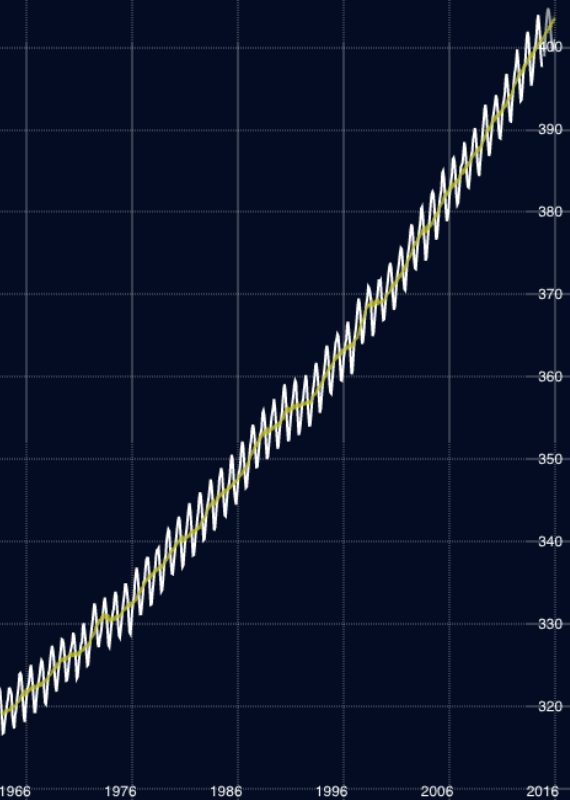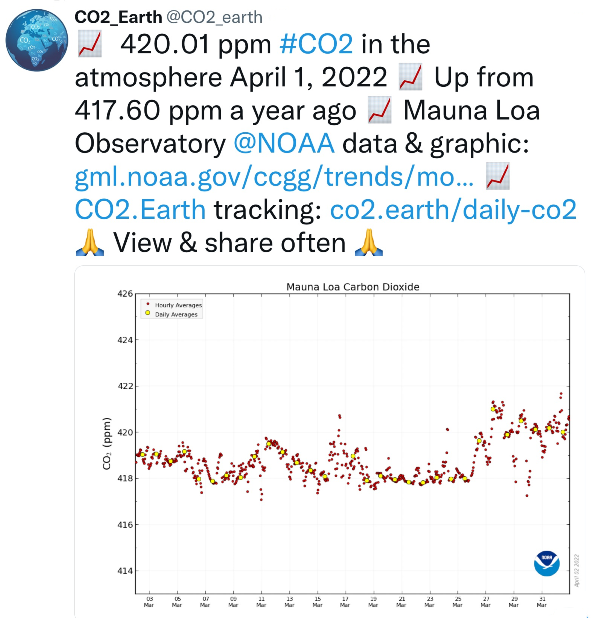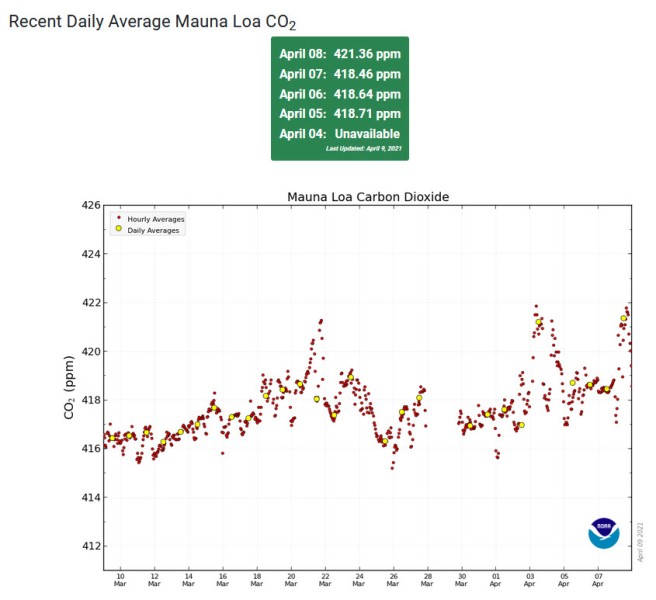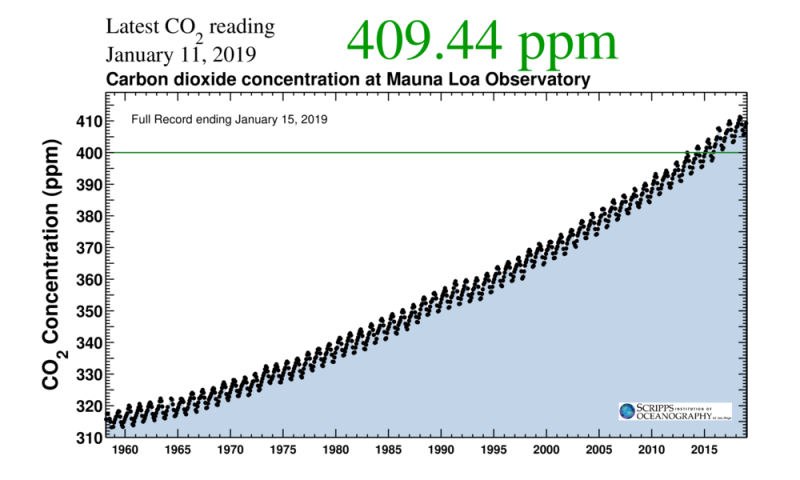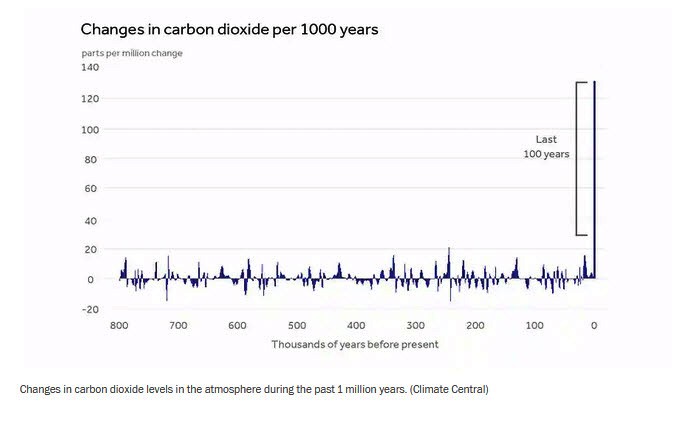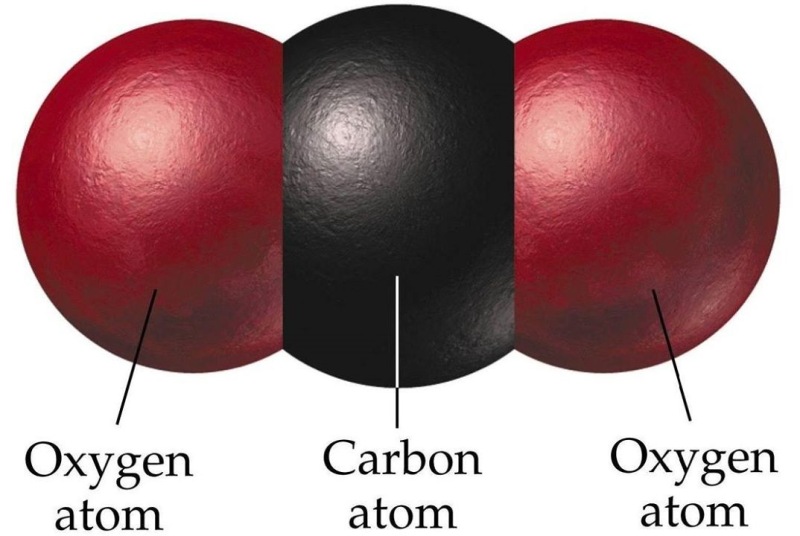File:Mauna Loa-NOAA-Observatory.jpg: Difference between revisions
Siterunner (talk | contribs) No edit summary |
Siterunner (talk | contribs) No edit summary |
||
| (11 intermediate revisions by the same user not shown) | |||
| Line 18: | Line 18: | ||
'''Monthly Average Mauna Loa CO2''' | '''Monthly Average Mauna Loa CO2''' | ||
Earth just had its warmest July on record | |||
July was the globe’s 14th month in a row of record warmth | |||
| Line 27: | Line 32: | ||
| |||
::<big><big><big>'''The Keeling Curve'''</big></big></big> | ::<big><big><big>'''The Keeling Curve'''</big></big></big> | ||
| Line 33: | Line 39: | ||
::[[File:C02 in atmosphere chart-3.png]] | ::[[File:C02 in atmosphere chart-3.png]] | ||
| |||
[https://www.history.com/news/keeling-curve-global-warming-climate-change <big><big>'''The Keeling Curve: Watch It!'''</big></big>] | [https://www.history.com/news/keeling-curve-global-warming-climate-change <big><big>'''The Keeling Curve: Watch It!'''</big></big>] | ||
:<big>'''Keeling's Curve has been called one of the most important scientific works of the 20th century'''</big> | :<big>'''Keeling's Curve has been called one of the most important scientific works of the 20th century'''</big> | ||
''Scripps CO2 measurements at Mauna Loa have been supported for many years by the U.S. Department of Energy (DOE), and have more recently been supplemented by Earth Networks, a technology company collaborating with Scripps to expand the global GHG monitoring network. Support for website development was provided in part by the National Science Foundation (NSF).'' | ''Scripps CO2 measurements at Mauna Loa have been supported for many years by the U.S. Department of Energy (DOE), and have more recently been supplemented by Earth Networks, a technology company collaborating with Scripps to expand the global GHG monitoring network. Support for website development was provided in part by the National Science Foundation (NSF).'' | ||
• https://scripps.ucsd.edu/programs/keelingcurve/ | |||
• https://scrippsco2.ucsd.edu/graphics_gallery/mauna_loa_record/ | |||
:<big>2023</big> | |||
<big>'''Hawaiian Volcanic Eruption Temporarily Disrupts the CO2 Measurements'''</big> | |||
:'''From the Mauna Loa site to a Mauna Kea site, the essential science data collection continues''' | |||
* https://www.nytimes.com/2023/02/06/climate/mauna-loa-carbon-dioxide-eruption.html | |||
* https://twitter.com/NCSE/status/1625310608097783809 | |||
* https://scrippsco2.ucsd.edu/graphics_gallery/mauna_loa_record/mauna_loa_record.html | |||
: <small>(multi-year scan)</small> | |||
| Line 53: | Line 86: | ||
:* https://keelingcurve.ucsd.edu/ | :* https://keelingcurve.ucsd.edu/ | ||
| Line 68: | Line 100: | ||
• https://www.esrl.noaa.gov/gmd/ccgg/trends/ | • https://www.esrl.noaa.gov/gmd/ccgg/trends/ | ||
• https://www | • https://www.noaa.gov/ | ||
• https://www.noaa.gov/climate | |||
Latest revision as of 22:41, 16 August 2024
- Tracking the CO2, Tracking the Atmospheric Change
- About the Mauna Loa CO2 Observatory
- NOAA Global Monitoring Laboratory
2024
Monthly Average Mauna Loa CO2
Earth just had its warmest July on record
July was the globe’s 14th month in a row of record warmth
⬆️
July 2024: 425.55 ppm
July 2023: 421.83 ppm
- The Keeling Curve
- Keeling's Curve has been called one of the most important scientific works of the 20th century
Scripps CO2 measurements at Mauna Loa have been supported for many years by the U.S. Department of Energy (DOE), and have more recently been supplemented by Earth Networks, a technology company collaborating with Scripps to expand the global GHG monitoring network. Support for website development was provided in part by the National Science Foundation (NSF).
• https://scripps.ucsd.edu/programs/keelingcurve/
• https://scrippsco2.ucsd.edu/graphics_gallery/mauna_loa_record/
- 2023
Hawaiian Volcanic Eruption Temporarily Disrupts the CO2 Measurements
- From the Mauna Loa site to a Mauna Kea site, the essential science data collection continues
- (multi-year scan)
- 2022
2021
Mauna Loa, Hawaii - NOAA
2020
CO2 Measurements @Mauna Loa, Hawaii
• https://www.esrl.noaa.gov/gmd/ccgg/trends/
• https://www.noaa.gov/climate
Highest Daily CO2 Records (by year) | Mauna Loa Observatory
Measurements are made by two independent CO2 monitoring programs (NOAA and Scripps) at the Mauna Loa Observatory in Hawaii about 3400 metres above sea level.
2019 (as of January 12, 2019)
413.45 ppm on January 12, 2019 (NOAA-ESRL)
411.14 ppm on January 7, 2019 (Scripps)
411.08 ppm on January 6, 2019 (Scripps)
2018
412.60 ppm on May 14, 2018 (Scripps)
412.45 ppm on May 14, 2018 (NOAA-ESRL)
412.37 ppm on April 23, 2018 (NOAA-ESRL)
2017
412.63 ppm on April 26, 2017 (NOAA-ESRL)
411.27 ppm on May 15, 2017 (NOAA-ESRL)
2016
409.44 ppm on April 9, 2016 (Scripps)
409.39 ppm on April 8, 2016 (Scripps)
2015
404.84 ppm on April 13, 2015 (Scripps)
○
- CO2
File history
Click on a date/time to view the file as it appeared at that time.
| Date/Time | Thumbnail | Dimensions | User | Comment | |
|---|---|---|---|---|---|
| current | 13:25, 6 April 2019 |  | 800 × 450 (77 KB) | Siterunner (talk | contribs) |
You cannot overwrite this file.
File usage
The following 10 pages use this file:
